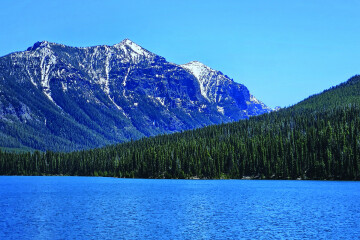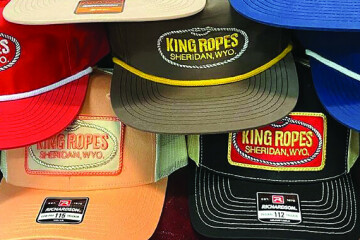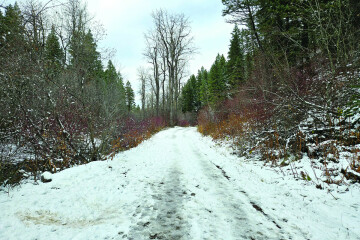Hiking Footwear
The story goes that on the approach to a Himalayan climb in the late 1970s, a couple of the American climbers decided that wearing their huge waffle-stomping boots made no sense. They made the long approach hike in sneakers. At that time, exercise for its own sake was at its beginning. For any athletic endeavor—climbing, baseball, hunting—it was considered necessary to worry about conditioning only immediately prior to the event. There were no coaches for nutrition, flexibility, or strength, let alone psychological motivation. Babe Ruth was said to exist on beer and hotdogs. Getting in shape for something did not mean staying in shape.
So the approach hike to Himalayan summits was considered vital to acclimatization, conditioning, and toughening the climber’s feet. These hikes took weeks, and covered many miles. The heavy leather boots had to be broken in, gotten used to, made flexible. Thus, the mountaineer could arrive at base camp ready to assault the mountain. Or, just as likely, they could arrive with their feet in bloody ribbons.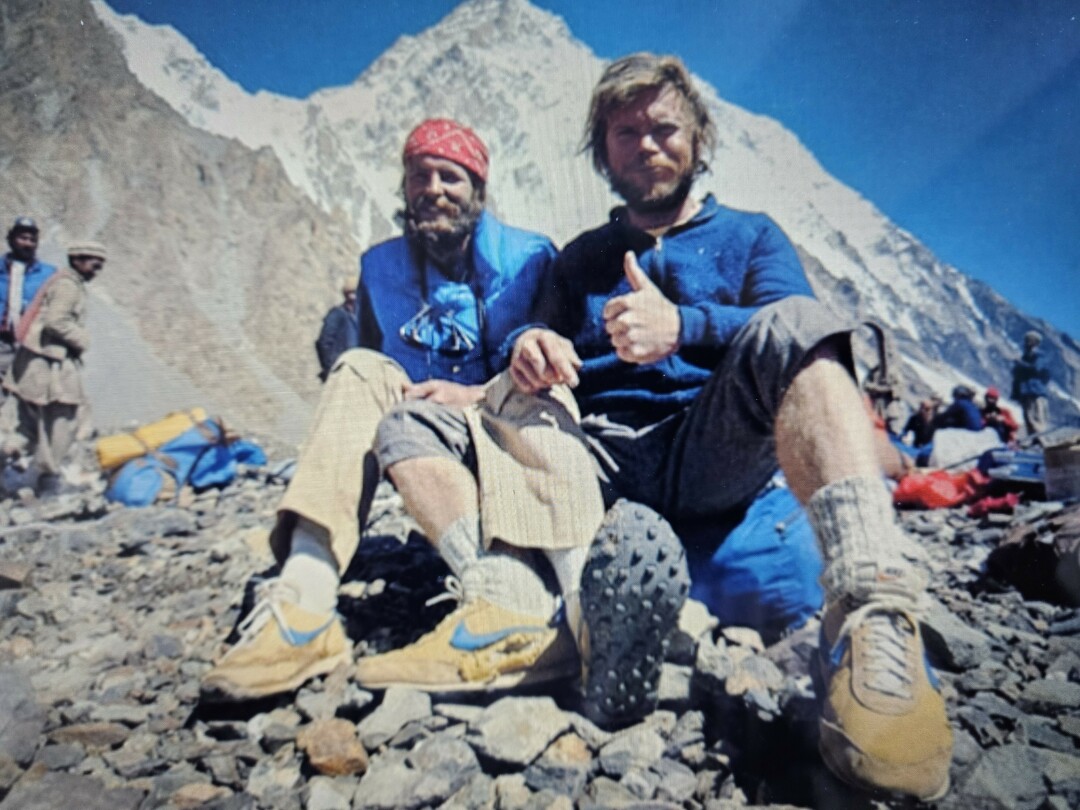
The boots that were designed for mountain climbing were also considered necessary for backpacking. Conventional wisdom in the outdoor community held that the support provided for foot and ankle was indispensable for packing heavy loads. There was no ultra-light gear. Hikers bragged about their heavy loads. I arrived for a month-long backpacking course in Wyoming in 1970 wearing a pair of mid-weight boots I had purchased the year before. They were leather, above the ankle high, and had the proper Vibram sole. Yet, when we were being issued our gear, I was told that my boots were too lightweight. The young instructors and guides were like gods to me, but for some reason I hung on to my boots when they offered to swap them out. The boots did fine, and so did I. Since I had been wearing them for a year, I was spared the blisters and discomfort that virtually every other person on the trip experienced. Later, though, when those boots wore out, I fell into line and bought heavy boots and wore several pairs over the years.
But in the early 1980s a revolution in hiking footwear began. A photo of climbers Roskelly and Ridgeway (who later summited K2), sporting their approach sneakers, was sent to Nike. The idea of a hiking shoe, much lighter than the big leather boots, but stouter than a running shoe, became reality in the Nike Lava Dome. I bought my first pair from Steve Schnee when he had his shoe shop on Mendenhall. A few years later, when he told me the style was being discontinued, I bought two pair, though it strained my budget. I remember they were $33.00 a pair. The Lava Dome has been brought back; I assume the price is different.
By then other shoe manufacturers had joined the trend. There were many choices. Part of the reason for that was the genesis of new sports in the outdoors. Hiking and climbing surged in popularity. Nordic skiing, snowshoeing and snowboarding covered the winter months. Mountain biking and trail running were brand new. A person who participated in all of these activities could possibly have a dozen sets of footwear in the gear closet, everything from plastic high altitude mountaineering boots to ultra-light trail runners. The retailers and manufacturers loved it.
There are even products that go over your footwear for certain conditions; crampons and micro-spikes, long and short gaiters. There is a subset of footwear for water sports; fishing, kayaking, and white-water rafting. And it is probably a good idea to have a different pair of socks for each of these shoes. Is all of this variety and expense necessary? Maybe, probably not, it depends. Most of us will not be involved in all of these sports, though in Bozeman that is not unusual. The main aspects are performance and comfort.
Getting back to hiking, we can consider the following points. The ultimate hikers are those who through-hike the long trails. These trails include the Appalachian, the Pacific Crest and the Continental Divide trails, known as the triple crown. These hikers cover up to thirty miles or more a day, walking thousands of miles in a matter of months in all conditions. Almost all of these athletes wear lightweight trail runners. In this case, comfort far outweighs performance. It is not unusual to wear out a pair of these shoes every 300 miles, going through up to 10 pair in the course of the adventure. This is a considerable expense but indicates that, like an army, a hiker must have healthy feet to march. Blisters or other foot conditions can stop a through-hiker in his or her tracks so to speak.
But comfort also includes support, chiefly for ankles and arches. Orthotic inserts for arch support can be used in most shoes and boots if there is not enough in the construction of the shoe. Ankle support usually means what we used to call high-tops, mid height or above the ankle boots. Previously, this kind of ankle protection meant heavier boots. But recently the higher top feature has been incorporated into lighter weight shoes. Decisions, decisions.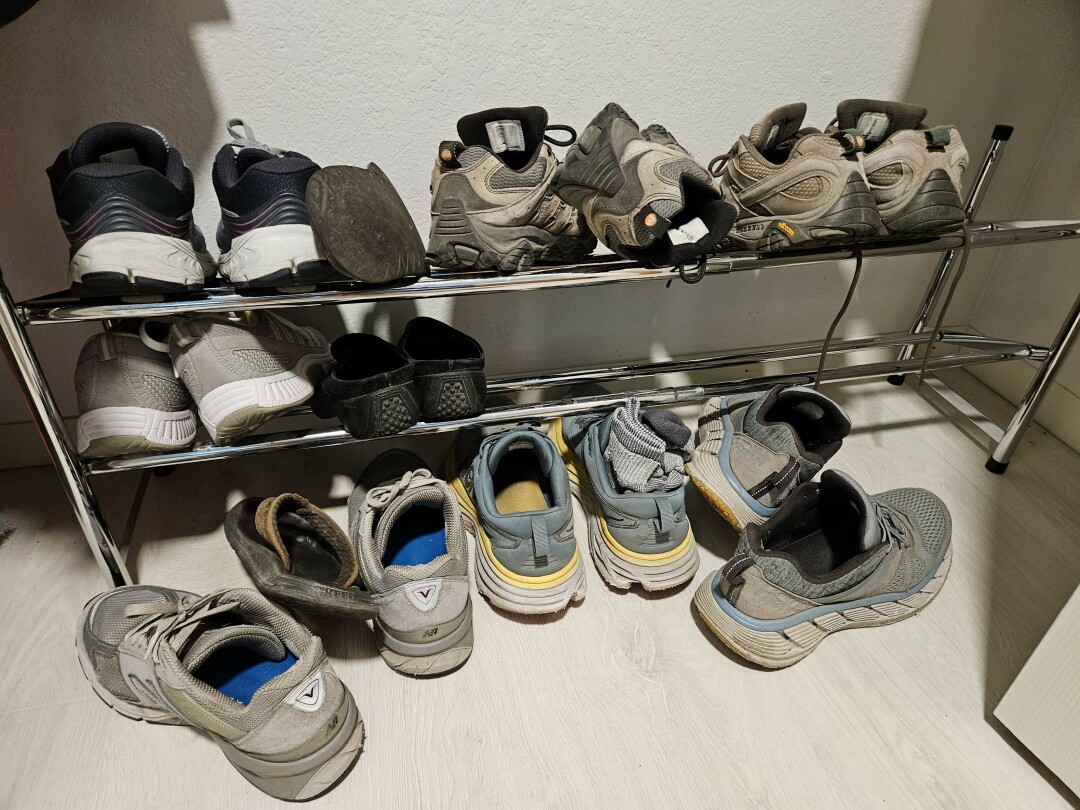
Another key factor is shoe weight. The most cold-weather specialized mountaineering boots can weigh up to 9 lbs. a pair. These boots are not made for walking. Lightweight running shoes may weigh just 1.5 lbs. a pair. All other hiking shoes, boots, and trail runners are somewhere in between these extremes. These days, we all know how many steps are in a mile. It is certainly preferable to lift a one pound shoe with each step than it is to lift a two pound shoe. So, buy the lightest shoe possible and simply fly? Well, it is more complicated.
Comfort and support are going to add weight. The answer is to find a balance of padding and sturdy construction, while keeping light weight in mind. There are, of course, other factors, such as fit, price and style. I have found that a looser shoe performs better for me for comfort. There are times when a thicker sock is preferable, so a loose fit helps. This can also be adjusted with tightness of lacing. You do not want to fall off your shoe, but there is not much worse than a shoe that is too short or tight.
It took me a long time to bring myself to pay over a hundred dollars for a pair of shoes (notice that I remember the Lava Dome price). In this realm, the old cliché is at work—you get what you pay for. You can buy a cheap hat or t-shirt, but please do not buy cheap shoes! That type of frugality can turn a pleasant day of hiking into a suffer fest.
A final aspect is style. We all care what we look like, whether we want to admit it or not. There is a current trend to use any color in shoes as long as it is bright and neon. My favorite is gray; it matches my hair. Come to think of it, some of the neon colors match some hikers’ hair also. That is cool. These days it is hard to find good old gray.
There is usually a brighter hue, at least for trim or accent. But I have begun to evolve and may be sporting a lime, purple, and orange combo soon, but not up top. Just don’t buy shoes on color and style alone; make sure of all the other factors discussed above.
There are those who have stuck with the big leather boots. They do not vary and they believe in the tradition. That is great; if they have found what works and the weight is worth it, then fine. Until just recently, I had not backpacked in trail runners. I only used heavy boots in snow but used sturdy hiking shoes with a load. On an overnight in the Bridgers, I wore runners. The Bridgers are unrelentingly steep. Coming down from the ridge to the M trail pounds your foot into the front of your shoe. It is necessary to stop the descent frequently to ease that discomfort. With the trail runners I felt none of that, and they had sufficient support for me. I would not recommend them for scrambling or climbing, but being pain-free coming down a mountain was amazing.
I have not mentioned any brands. There are dozens. I have a couple that I buy and would recommend but there are many that I have never tried, some brands that I may not even be aware of. It is best to do the work yourself. Check online for the shoes that match your needs: casual day hikes, trail runs, overnight trips. Then, go to the shops for advice from professionals. Try some shoes on and make informed choices. And remember, if you are wearing comfortable, well-fitting shoes, you will look good, stylin’ out on the trail.





